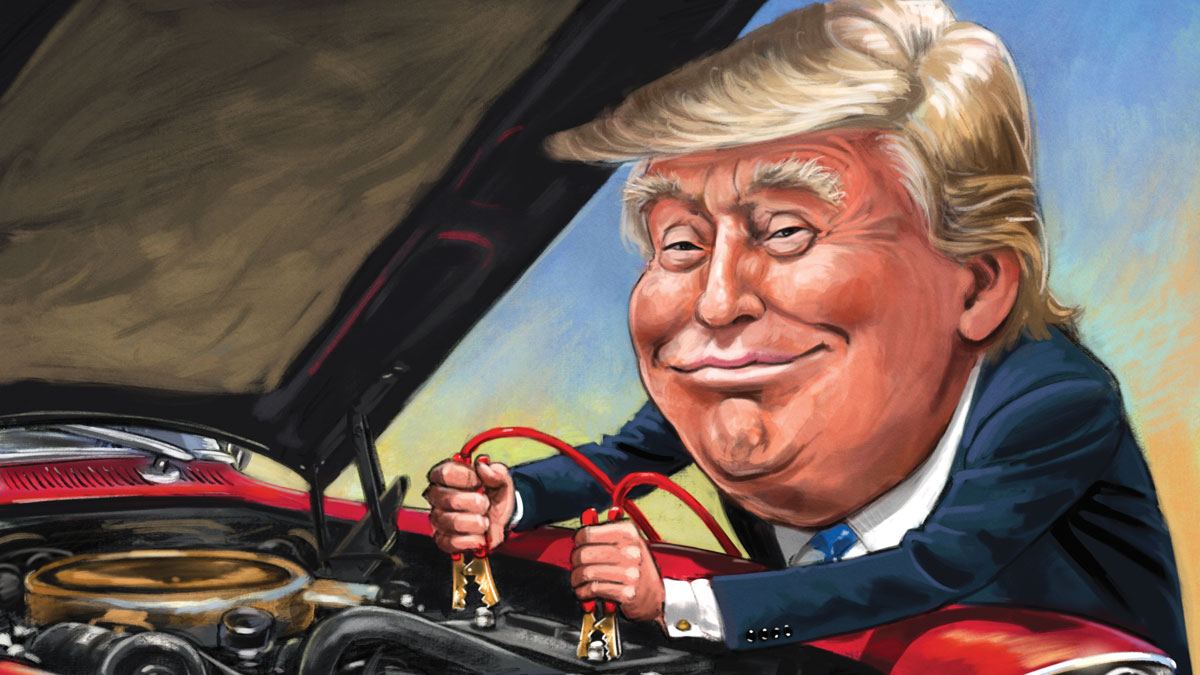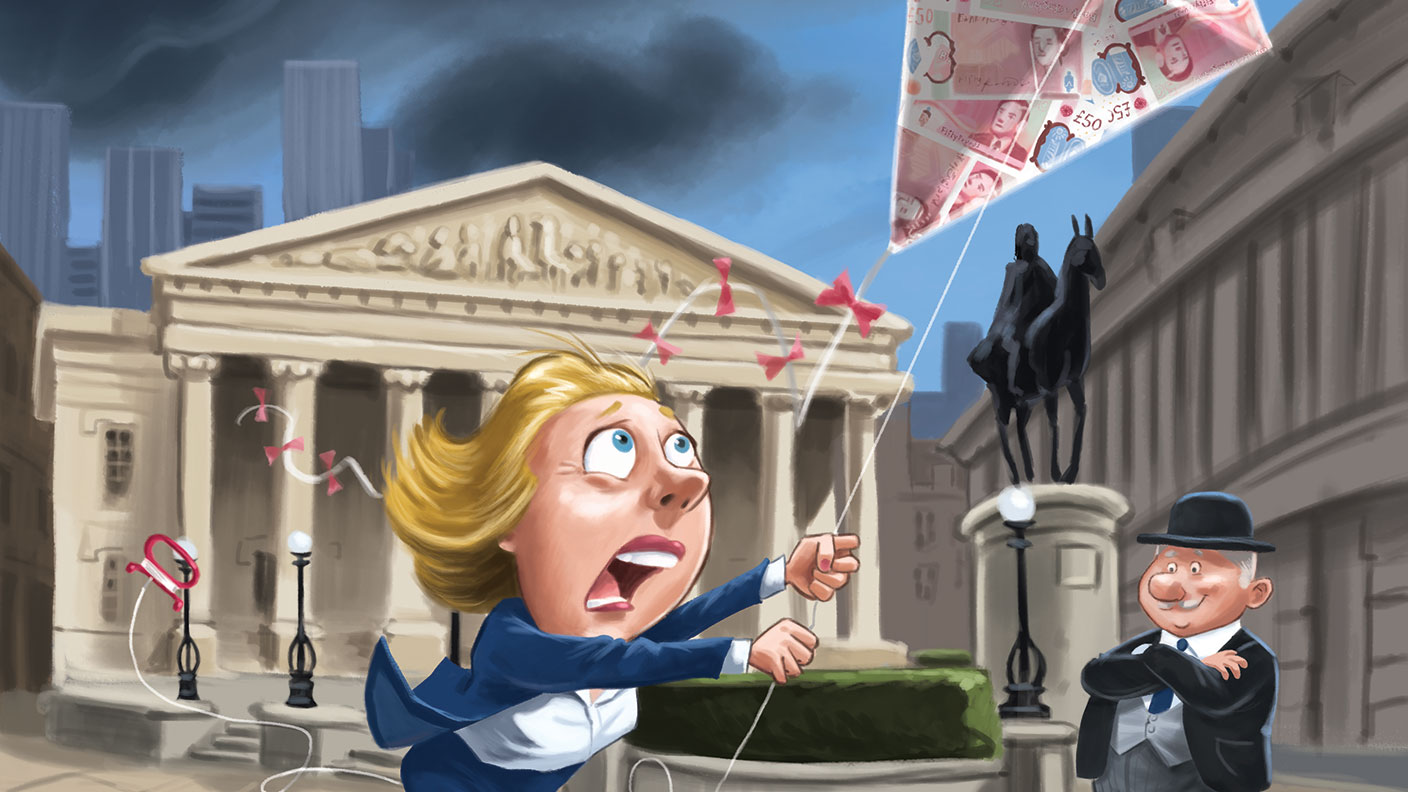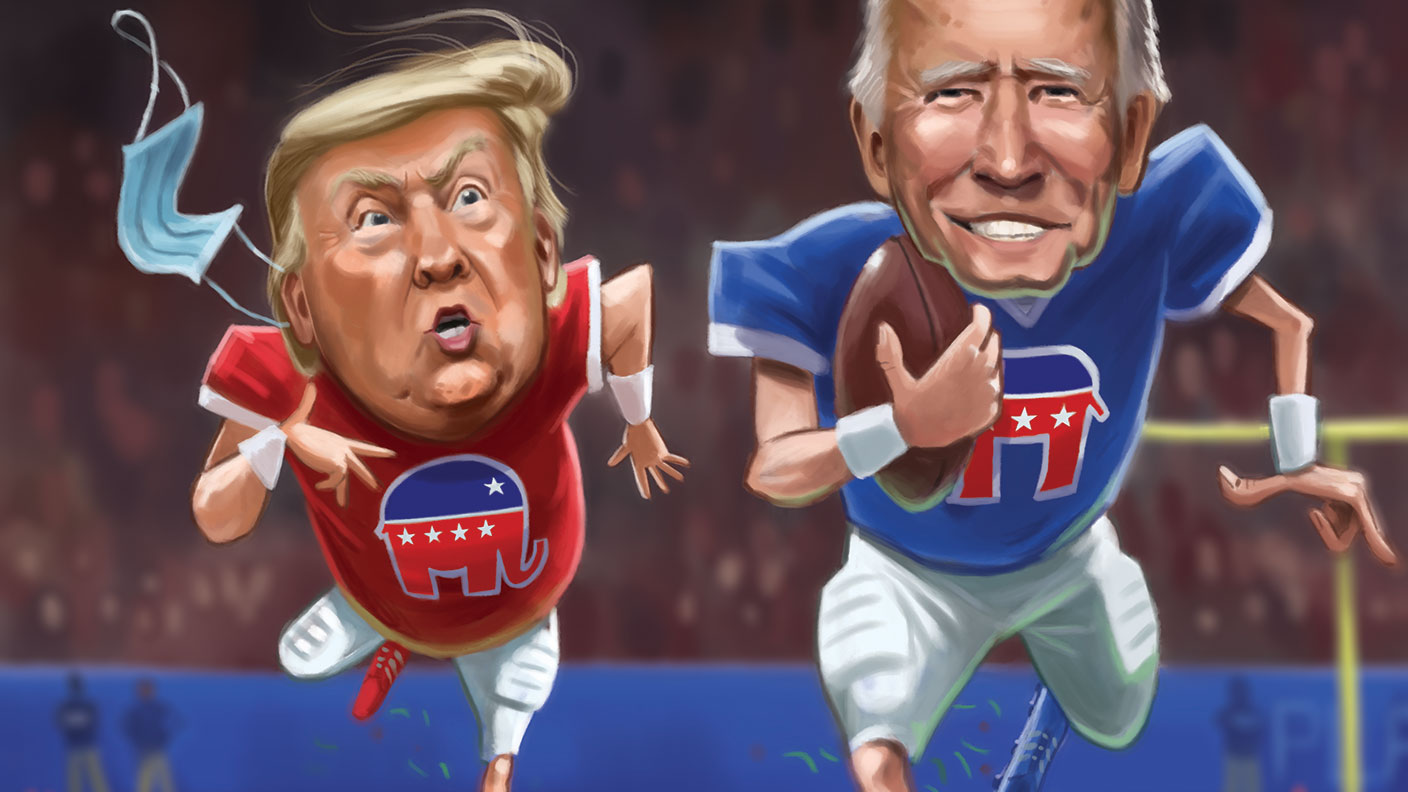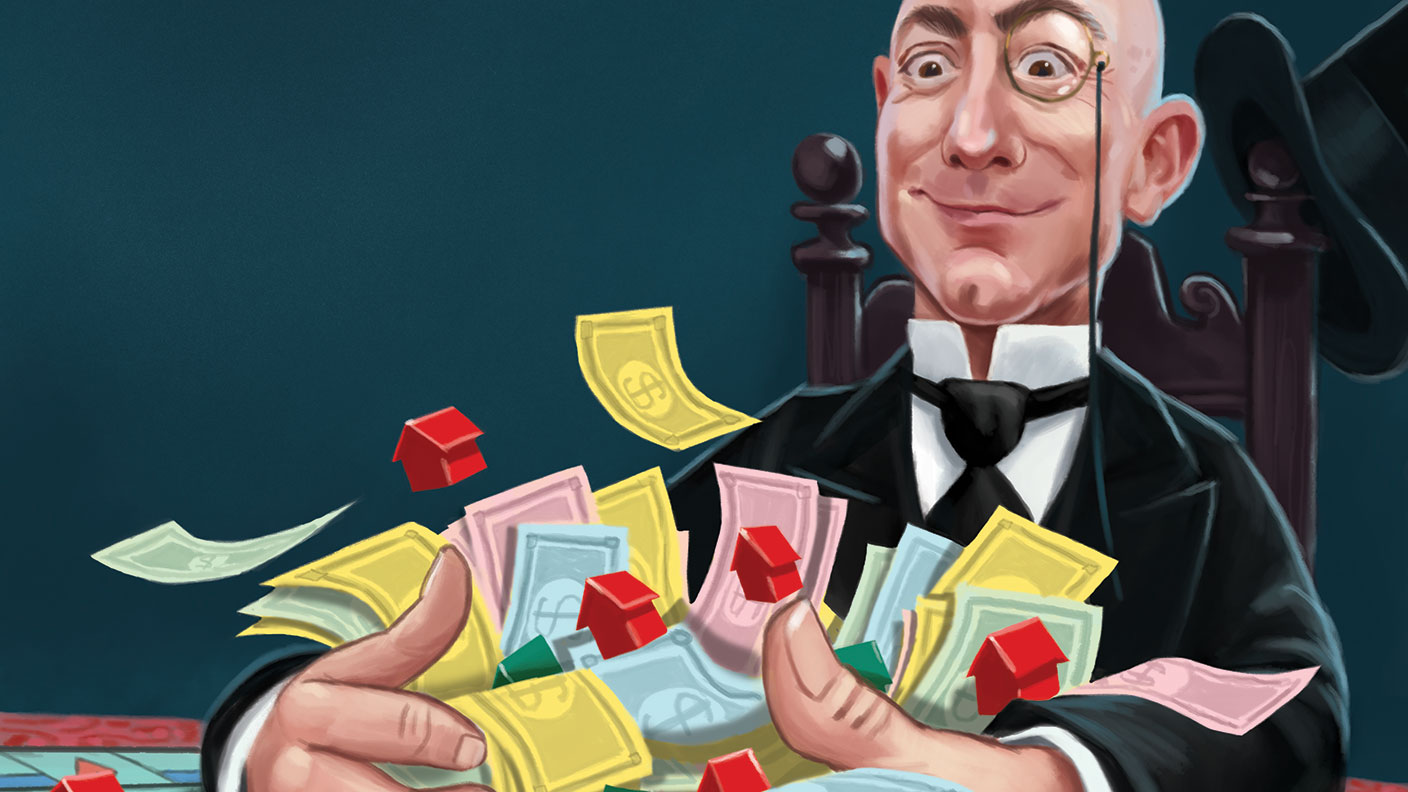Can Trump really make America great again?
The US has a new president unlike any other – what are the implications for investors of The Donald’s dominion? Rupert Foster reports.


The US has a new president in Trump unlike any other what are the implications for investors of The Donald's dominion? Rupert Foster reports.
The average American household hasn't had a pay rise since 1999. This statistic that real (that is, after-inflation) median household incomes in the US have been flat for nearly 20 years explains Donald Trump's election victory more than any other. Since World War II, real US economic growth has averaged 3.5% a year, yet since 2009 it has been a far more pedestrian 2.1%.
Trump has promised to "make America great again" by boosting growth back to that stronger long-term trend rate. As his inauguration dawns, it's becoming clearer how he plans to do this through tax reform and a "bonfire of regulations", as some have put it. Will his policies work? And what will it mean for investors?
MoneyWeek
Subscribe to MoneyWeek today and get your first six magazine issues absolutely FREE

Sign up to Money Morning
Don't miss the latest investment and personal finances news, market analysis, plus money-saving tips with our free twice-daily newsletter
Don't miss the latest investment and personal finances news, market analysis, plus money-saving tips with our free twice-daily newsletter
Trump's tax cuts
The first change and the easiest one to analyse is the planned cuts to federal income tax. These have been dressed up as a "simplification" merging nine different tax rates into three but in effect it's a big tax cut (from 39% to 33%) for the rich, and a small cut for those on low and middle incomes (worth an extra 0.5%-2% or so on after-tax incomes). A glance at recent history shows that these changes are hardly revolutionary.
The top income tax rate was 28% under Ronald Reagan, Bill Clinton raised it to 39%, George W Bush cut it to 35%, then Barack Obama put it back up to 39%. These moves make those in high incomes a little richer or poorer, but don't do much to encourage or discourage entrepreneurial activity either way (only Reagan had a big impact on entrepreneurship in the US but then, when he came to power, the highest income tax rate was 70%). They don't do much for consumption growth either the wealthy tend to save any extra money they get.
That said, some of the more hopeful bulls reckon that the advent of the "Age of Melania" Trump's spendthrift wife could lead to a fresh boom in conspicuous consumption and spending on luxury goods. (The presidential inauguration "show" may give a hint as to how likely this trend is to take off.) And the cuts to middle- and low-income tax rates will make a difference these people are far more likely to spend any extra income, so tax cuts at this level are pure fiscal stimulus. Also, the cuts will have an immediate impact. Trump has stressed the importance of his infrastructure plans.
But these are almost insignificant China spends as much in eight months as Trump plans to spend over the next decade and will take time to plod through the traditional law-making process, and at any stage could fall foul of hard-line Republicans and their dislike of any form of fiscal largesse that involves boosting government spending.
On that note, the Republican aversion to government over-spending means that Trump's policies need to show results and boost growth (and the tax take) quickly, or else the fiscal deficit will balloon over the next two to three years, and his colleagues will revolt. Trump understands this earlier this month he was triumphantly tweeting about the dramatic rise in consumer confidence reported by the University of Michigan, which bodes well for consumption and the stockmarket in the first six months of 2017.
"Made in America"
But it's the second part of his tax reforms that could really provide the quick economic jolt required a proposed move to a destination-based corporate-tax model. This policy did not originally come from Trump, but rather from a plan put forward by Paul Ryan. Ryan, as Republican speaker, is the leading Republican in Congress. This matters. The Republicans control both houses, which puts Trump in a good position overall. But like any other president, he is at the mercy of Congress if he wants to get much done, particularly domestically.
Meanwhile, in the Senate, only three Republican senators need to vote against Trump to block any of his policies, so he needs to spend time building bridges rather than fighting with his colleagues. Given this, the fact that he and Ryan appear to have smoothed over their differences following a fractious campaign is important.
What does the corporation-tax reform involve? There is little contention on the proposed massive corporate tax cut from 35% to 15% this would take the US from having the highest level of corporation tax in the developed world to the lowest. As a result, we can expect to see more share buybacks and increased dividend payouts. However, Ryan and Trump are not just looking for an increase in dividends they are really looking to rework America's global taxation model.
This has left the US with no VAT on imports no inducement for corporate America to bring its overseas profits back into the country (overseas profits are only taxed when repatriated, so as a result, $2.4trn is sitting dormant overseas), and no incentive to build new factories or facilities in America (it makes more sense to invest overseas in lower tax jurisdictions).
This is where the destination-based corporate-tax model comes in. Goods and services will be taxed where they are consumed, rather than on a global basis. As a result, imports would be taxed at between 15% and 35%, but companies would pay no US corporation tax on revenues from exports.
Meanwhile, repatriated income would no longer be taxed. So the $2.4trn of cash currently parked offshore will be able to flow back to the US tax-free to pay for the potential investment and jobs boom. And all corporations, American or foreign, who sell to consumers or corporations based in the US, will have an incentive to conduct their "value-added" operations in the US (to avoid the import tax). As the US is the world's largest consumer economy, that's a big incentive.
The problem with an import tax
Trump has staked his reputation on bringing investment to America. He has conducted successful tweeting campaigns already against Ford and Toyota, and foreign business moguls have been queueing up to say that they are investing in the US from Terry Gou of Foxconn (Apple's main manufacturer), to Masayoshi Son of SoftBank, and then this week, Jack Ma of Chinese online giant Alibaba. So this all sounds like a clever method of dealing with a highly complex issue. However, as always, there are hurdles and downsides.
Firstly, the proposed structure looks likely to fall foul of World Trade Organisation rules and so may require flouting of international treaties, or significant alteration. Secondly, corporate America is up in arms and a full lobbying effort is in action in Washington even now. Foreign billionaires like Ma have little to lose and much to gain, so it's little wonder they're keen. But imports to the US dwarf its exports, and they are led by US companies such as Apple, Walmart and Amazon. These companies have spent years perfecting the lowest-cost model built on cheap imports.
The last thing they want to see is their US retail prices rise by 20% due to higher import taxes, hammering demand. Economists argue that over time the US dollar will strengthen to offset the impact of the import tax but a 20% rise in the dollar would be extremely detrimental both for US exports and the global economy. While production could steadily be moved to the US, this would take time and be very costly.
There are historical precedents. In the 1990s, the Japanese car makers were eviscerating their US rivals in their home market. Under political pressure, the Japanese started building factories across the southern states of America. If the same thing happens now, Apple may need to put together the iPhone 9 and 10 in the US. But the problem for many US companies today is that they do not do their own manufacturing. They have already outsourced that to Asian suppliers. That means it would take even longer to re-organise their supply chains and in the meantime retail prices will rise fast.
A tricky juggling act
Given that Trump's cabinet is full of business and finance professionals, will they really inflict this on their own kind? It seems unlikely. That said, the changes would undoubtedly be inflationary for both wages and prices in the short run, which is one reason why inflation expectations have risen sharply since Trump's election (buoying stockmarkets too). However, that flags up another tricky balancing act for Trump if inflation is stoked too quickly, bond yields will rise too fast.
That would mean corporate and household America would once again become fixated on their ever-growing debt piles, while the hard-line Republicans would fret over the government's debt mountain. Since 2009, US corporate debt is up 32% to $13trn, while since 2008, government debt has risen by 40 percentage points to 100% of GDP. Will US companies and individuals ignore their debts and keep spending even if wages are rising in the hope that the economy will return to that 3.5% trend growth? Not if interest rates rise too quickly they won't.
There is one other leg to Trumponomics, the "bonfire of the regulations". The most significant target here is the Dodd-Frank Act. This was the Democrats' well-meaning but poorly constructed plan to curtail the worst excesses of the financial industry after 2008. The act stretches to more than 2,000 pages of rules and regulations.
The Republicans would like to reform or repeal it, with a particular focus on the "Volcker Rule", which effectively stopped the large investment banks from conducting proprietary trading operations. This is very likely to be of significant benefit to the big global banks, who have often complained of being hamstrung since 2008. It may also allow something like a credit boom to start to puff up in the US, something which Trump is unlikely to discourage, as it would contribute to his need for rapid economic acceleration.
Will Trump pull it off?
So, where does all that leave us? Well, there's no question that Trump is a strongly pro-business, pro-stockmarket, pro-growth populist president. In his first year in office he will make every effort to re-accelerate the US economy, and to make Americans feel richer and more optimistic. And that probably means that in the first half of this year we'll see continued strength in the US stockmarket and the dollar, and continued weakness in US bond markets. However, after his initial success, Trump may struggle to keep all Republican senators in line behind him as weakness in the bond market shifts the focus to the country's debt burden, and makes it harder for Trump's economic reacceleration plans to succeed.
Trump has in his business career been willing to go "all in" when he runs low on chips, so he is unlikely to duck the challenge. However, the question is whether he can bring all the other players in the US political system with him through times of adversity particularly given that his traditional method of dealing with problems is to blame failure on others, even when they're meant to be on his side. And there are plenty of external problems looming that could derail his plans, not least potential upheaval in the eurozone. So while the good times look set to continue for now, be ready for the economic weather to turn nasty later in the year. We look at the best ways to play this scenario in the box below.
The investments to play the Trump bump
For the first half of 2017, we'd expect continued strong performance from the US stockmarket and the dollar, and continued weakness in the US bond market. Financial stocks are likely to be the best performers as the yield curve continues to steepen (that is, interest rate expectations rise), financial regulation is rolled back, and the economy and stockmarkets in general improve.
The largest players will benefit most, so you needn't look further than banks such as JP Morgan (NYSE: JPM), Wells Fargo (NYSE: WFC), Goldman Sachs (NYSE: GS) or Morgan Stanley (NYSE: MS). European investment banks with strong US exposure including Deutsche Bank (Germany: DBK) and UBS (Switzerland: UBSG) should benefit too, but watch for growing stress in the eurozone.
Elsewhere, smokestack industries have done well since the election on hopes for higher infrastructure spending, but investors here are likely to be disappointed. Multinationals with high exposure to the US should benefit from the US consumer recovery, but may suffer depending on the exact structure of the destination-based corporate tax.
Purely domestic retailers and manufacturers will see the most benefit. Companies like Disney (NYSE: DIS) and home improvement giant Home Depot (NYSE: HD) will continue to perform very well, and seem relatively well-protected from the continued growth in e-retailing. I would also favour discount retailer, TJX (NYSE: TJX) (which owns the TK Maxx chain), retail farm supplier Tractor Supply (Nasdaq: TSCO) and cosmetics manufacturer Coty (NYSE: COTY), which is in the midst of a restructuring process.
Elsewhere, the strong dollar may hold back the performance of emerging markets, compounded by fears that manufacturers might have to move facilities. But diplomatic tension with countries such as China and the Philippines should open up buying opportunities in these long-term high-growth economies.
Meanwhile, the end of the 35-year bull market in US Treasuries has been called annually by most investment strategists however Trumponomics may be the catalyst that has finally broken a trend which started in 1981, when yields were 15.8%. Sterling investors should look at short-dated treasuries, a handy way to bet on dollar strength, but avoid longer-dated bonds.
Get the latest financial news, insights and expert analysis from our award-winning MoneyWeek team, to help you understand what really matters when it comes to your finances.
Rupert is an investment strategist and adviser at J & C Foster, providing Asian, Consumer and Global Equities Strategy advice to a number of family offices and portfolio management organisations. He writes on Asia and Global Macroeconomics for a number of investment publications including MoneyWeek and HL Investment Times.
-
 How cancelling unused direct debits could boost your pension by £37,000
How cancelling unused direct debits could boost your pension by £37,000A new year refresh of your spending could save you money and help boost your pension pot.
-
 NS&I cuts interest rates on 8 savings accounts
NS&I cuts interest rates on 8 savings accountsNS&I will now offer less attractive interest rates for customers wishing to lock their savings away to grow for one, two, three or five years.
-
 Governments will sink in a world drowning in debt
Governments will sink in a world drowning in debtCover Story Rising interest rates and soaring inflation will leave many governments with unsustainable debts. Get set for a wave of sovereign defaults, says Jonathan Compton.
-
 Why Australia’s luck is set to run out
Why Australia’s luck is set to run outCover Story A low-quality election campaign in Australia has produced a government with no clear strategy. That’s bad news in an increasingly difficult geopolitical environment, says Philip Pilkington
-
 Why new technology is the future of the construction industry
Why new technology is the future of the construction industryCover Story The construction industry faces many challenges. New technologies from augmented reality and digitisation to exoskeletons and robotics can help solve them. Matthew Partridge reports.
-
 UBI which was once unthinkable is being rolled out around the world. What's going on?
UBI which was once unthinkable is being rolled out around the world. What's going on?Cover Story Universal basic income, the idea that everyone should be paid a liveable income by the state, no strings attached, was once for the birds. Now it seems it’s on the brink of being rolled out, says Stuart Watkins.
-
 Inflation is here to stay: it’s time to protect your portfolio
Inflation is here to stay: it’s time to protect your portfolioCover Story Unlike in 2008, widespread money printing and government spending are pushing up prices. Central banks can’t raise interest rates because the world can’t afford it, says John Stepek. Here’s what happens next
-
 Will Biden’s stimulus package fuel global inflation – and how can you protect your wealth?
Will Biden’s stimulus package fuel global inflation – and how can you protect your wealth?Cover Story Joe Biden’s latest stimulus package threatens to fuel inflation around the globe. What should investors do?
-
 What the race for the White House means for your money
What the race for the White House means for your moneyCover Story American voters are about to decide whether Donald Trump or Joe Biden will take the oath of office on 20 January. Matthew Partridge explains how various election scenarios could affect your portfolio.
-
 What’s worse: monopoly power or government intervention?
What’s worse: monopoly power or government intervention?Cover Story Politicians of all stripes increasingly agree with Karl Marx on one point – that monopolies are an inevitable consequence of free-market capitalism, and must be broken up. Are they right? Stuart Watkins isn’t so sure.
